



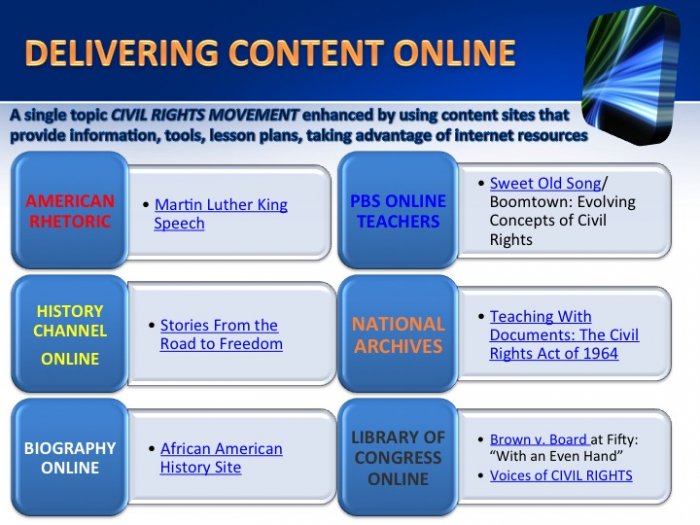








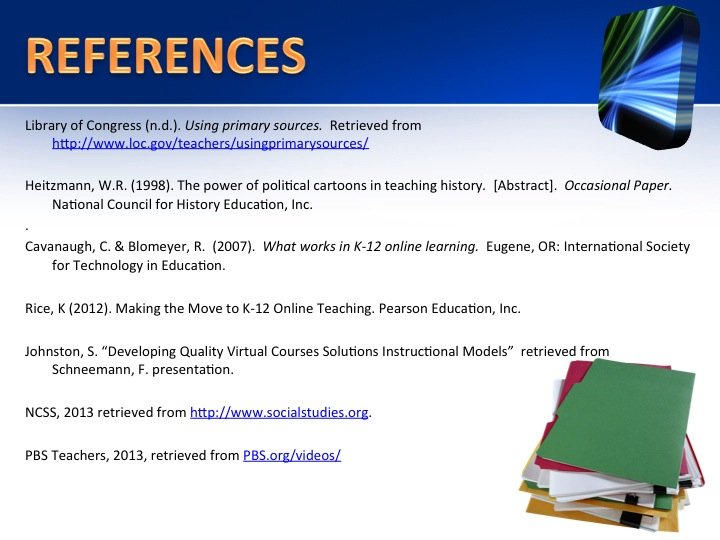
Educational Technology Social Studies
World War I
1914-1918
The Great War
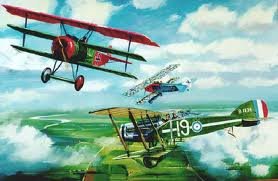

Entangling Alliances
The unification and rapid rise of Germany upset the balance of European power after decades of relative peace. A powerful, militarized Germany and tension in the Balkans further complicated geopolitical dynamics. In 1882, Austria-Hungary, Germany, and Italy formed an alliance called the Triple Alliance. In turn, Great Britain, France, and Russia formed their own alliance in 1907, called the Triple Entente. All these events and situations created a powder keg-like environment in Europe. The spark finally came in June of 1914 when Archduke Franz Ferdinand was assassinated by Gavrilo Princip, amember of the Slavic nationalist organization called the Black Hand. The assassination of this leader resulted in Austria-Hungary invading Serbia, which in turn , led to the July Crisis and ultimately a devastating war.
The War On Land, Sea and in The Air
World War I was the first truly modern war. It was the first war in which mechanized warfare was carried out on a large scale. Mechanized warfare simply refers to the use of advanced machinery in war. On land, World War I was characterized by trench warfare, in which men would dig complex systems of trenches in order to provide a defensive position. Conditions in these trenches were appalling. The tank was invented during World War I by the British. The first tank, the British Mark 1, saw action during the Battle of the Somme in 1916. Poison gas was also first used on a large scale during World War I, prompting soldiers to wear gas masks. Mustard gas and chlorine gas were two of the most popular chemical agents used in gas attacks. Germany developed a formidable fleet of submarines, or U-boats, and used them to target Allied merchant vessels in the Atlantic. World War I was also the first war in which the airplane saw widespread use. One of the most famous aces of the war was the German pilot Manfred von Richthofen, commonly known as the Red Baron. If there is one thing you should remember about the Great War, it is that it was a war of firsts: the first use of mechanized warfare and chemical warfare, the first use of the tank, and the first widespread militarized use of the submarine and airplane.
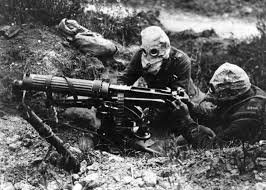
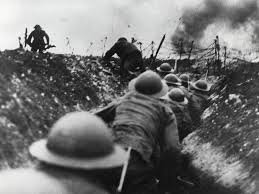
The First World War was a brutal conflict resulting in unprecedented destruction and loss of life. While there were many critical battles throughout the war, some stand out as being more important than others. The battles of Verdun and the Somme are probably the most famous engagements of the war, although there were several other key battles. The Battle of Tannenberg was an early battle in World War I. It was fought between the Germans and the Russians in August 1914. Under the leadership of Generals Erich Ludendorff and Paul von Hindenburg, the Germans defeated the Russians. Railway movement played a critical role in this battle. Russian General Alexander Samsonov committed suicide following the Russian defeat. The Battle of the Marne in September 1914 was important because it halted the German advance through Belgium and France. The battle brought about four years of entrenched stalemate along the Western Front. Taxi cabs used to transport troops from Paris to the front became mythologized as the 'Taxis of the Marne.' The Battle of Verdun was a costly battle in which Germans attacked the French city of Verdun and its ring of fortifications. Under the leadership of General Philippe Pétain, the French put up a stiff resistance, and eventually held out. The Battle of the Somme or the Somme Offensive, was another costly battle. This Western Front battle between the British and French against the Germans resulted in over one million combined casualties. The battle was intended to break through German lines, but it devolved into months of muddy trench warfare. This battle is important because it was the first in which the combat tank was used. The Third Battle of Ypres was a Western Front battle between the Allies and the Germans between July to November 1917, in Western Belgium. The battle was intended to be an Allied thrust though German defensive positions, but in the end, little substantial progress was made. Over half a million casualties resulted from this futile engagement.
Major Battles Of World War I
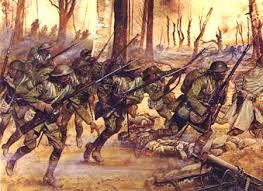
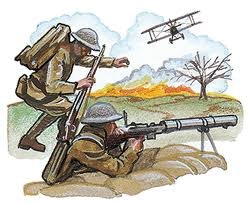

When World War I first broke out in 1914, isolationist sentiment was strong throughout the United States. While there may have been some sympathy for the plight of Great Britain and France, most Americans felt neutrality was in their best interest. After all, why should America become involved in a European war? This war had nothing to do with the United States; that was the mentality most Americans shared. In fact, President Woodrow Wilson campaigned in 1915 with the slogan 'He Kept Us Out Of War.' Two important events, however, began to change public opinion toward American intervention. The first was the sinking of the RMS Lusitania on May 7, 1915 by a German U-boat, U-20. Although the RMS Lusitania was a British liner, over 100 Americans lost their lives. The sinking of the Lusitania, along with Germany's policy of unrestricted submarine warfare, outraged Americans. What is unrestricted submarine warfare? Basically, it's the policy of attacking merchant and other non-military vessels without notice. A second critical event influencing American public opinion toward intervention was the interception of the Zimmermann telegram. The Zimmermann telegram, or the Zimmermann note, was a telegram sent in January 1917 from Germany to Mexico, inviting them to join the Central Powers. In return for Mexican collaboration, Germany would assist them in re-conquering portions of the American Southwest, like Texas and New Mexico.
By late 1918, it was becoming increasingly apparent the Central Powers were doomed for defeat. The intervention of the United States and their subsequent Hundred Days' Offensive spelled disaster for the Imperial German Army. Within Germany, morale was at an all-time low. Desertions and calls for withdrawal were becoming more common every day. In November 1918, German sailors mutinied, triggering the German Revolution of 1918-1919. This ultimately resulted in overthrow of the Imperial government and the establishment of the Weimar Republic. In the context of such chaos, Germany was forced to move toward an armistice. In January 1918, American President Woodrow Wilson laid out his famous Fourteen Points. The Fourteen Points set forth a plan for postwar Europe. Wilson envisioned an end to hostilities and a Europe reconfigured on the principles of free trade, open agreements, democracy and self-determination, among others. Wilson's Fourteen Points provided the basis for Germany's armistice with the Allies. On November 11, 1918, at 11:00 a.m., the Armistice of Compiegne went into effect. The armistice is named after the Compiegne Forest in Northern France. At this location German officials were received aboard French Marshal Ferdinand Foch's stopped railroad car, and after three days of talks, signed an armistice. In reality, there was very little negotiating going on. Germany virtually had no choice but to submit to Allied terms and conditions. Major hostilities thus formally ended at the eleventh hour of the eleventh day of the eleventh month of 1918. But remember, this was only an armistice, not a permanent peace treaty! Interestingly enough, in a bitter twist of fate, Adolf Hitler would board that same train carriage in June 1940, and force the French to sign another armistice: one that essentially turned France over to Nazi occupation. That is another lesson for another time, however. One more side note: the federal holiday we know as Veteran's Day evolved from Armistice Day, the annual celebration of the Armistice of Compiegne. So next Veteran's Day, be mindful of what happened aboard a small railroad car in the Compiegne Forest of France. While the actual fighting had come to an end under the Armistice of Compiegne, a permanent peace treaty took longer to iron out. The Paris Peace Conference began in January 1919, and lasted roughly a year. The goal of the conference was to secure a lasting European peace, one that hopefully would prevent future wars from breaking out. The conference was a major diplomatic event with over 30 countries represented. Among the leading figures at the conference were Georges Clemenceau from France, David Lloyd George from Great Britain, Vittorio Orlando from Italy, and Woodrow Wilson from the United States. These leaders are sometimes referred to as the Big Four. President Wilson suggested a peace centered around his Fourteen Points. He also promoted the formation of the League of Nations, which was an international council aimed at maintaining world peace. Think of the League of Nations as a sort of precursor to the United Nations. As much as President Wilson championed the League of Nations, the United States did not join. The U.S. Senate voted down American participation in Wilson's beloved league. The major product of the Paris Peace Conference was the Treaty of Versailles.
The Treaty of Versailles formally ended World War I. It was signed June 28, 1919, five years to the date of the assassination of Archduke Franz Ferdinand. Just as in the Armistice of Compiegne, Germany had virtually no room for negotiations. The ravaged nation was basically forced to accept whatever treaty it was presented with. One of the most controversial conditions of the Treaty of Versailles was outlined in Article 231, also known as the War Guilt Clause. This section required Germany to take full responsibility for all damage done throughout the war. It also required Germany to make territorial concessions and pay enormous reparations. Requirements for disarmament and limitations on military capabilities were also written in. Basically, it was an admission of guilt: the war was Germany's fault. Article 231 was written by U.S. diplomats Norman Davis and John Foster Dulles. The general consensus among historians is that the Treaty of Versailles was unduly harsh toward Germany. It has normally been seen as a 'victor's peace.' Many historians cite the harsh terms of the Treaty of Versailles as a major cause of the rise of Adolf Hitler and his National Socialism during the 1920s and 1930s. Many people do not realize that the United States did not actually accept the Treaty of Versailles. While other European countries agreed to it, the U.S. Senate failed to ratify the treaty. As a result, peace between Germany and the United States was not technically in place until the Treaty of Berlin in 1921. Of course, most textbooks fail to mention this.
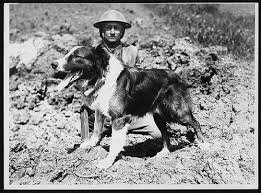

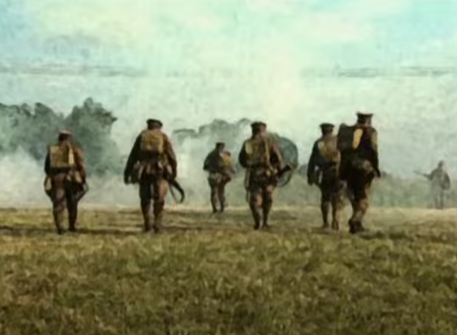
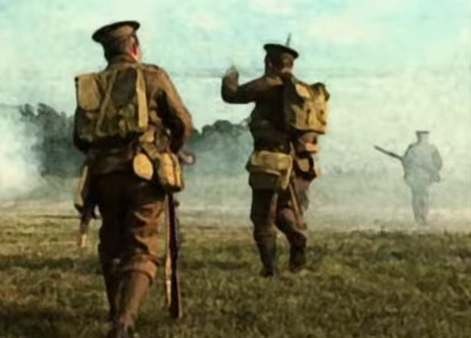
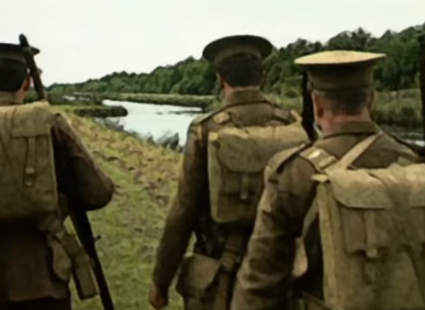

The Causes of World War I
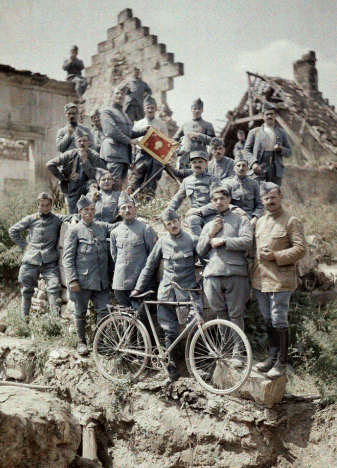
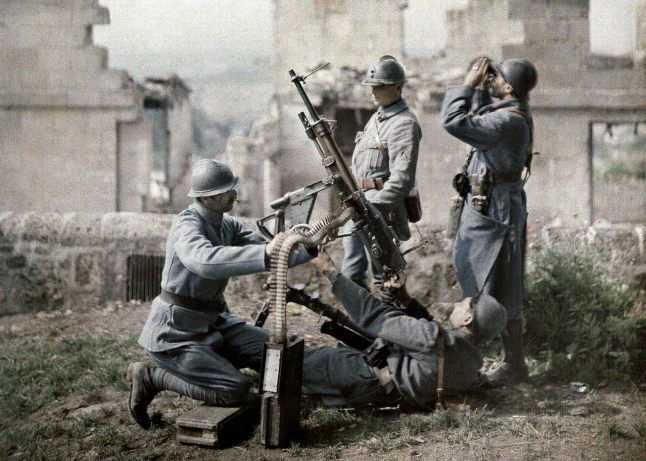
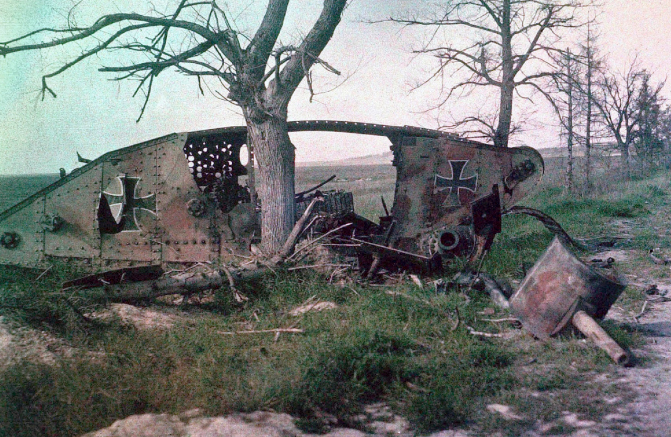
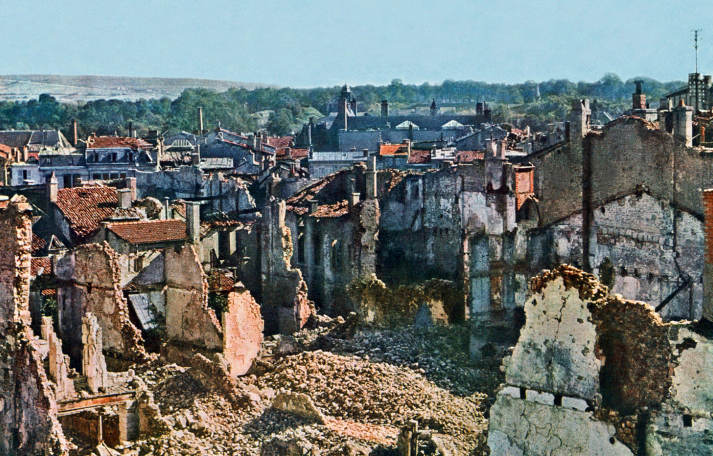
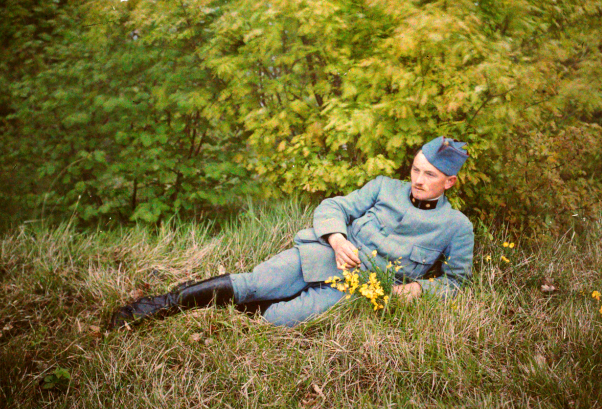
American Involvement In World War
Imperial Russia suffered staggering losses throughout World War I. While many in the Russian Empire initially greeted the war with enthusiasm, within a few years it had become highly unpopular. Food shortages, riots, and general unrest led to Tsar Nicholas II falling out of favor with the Russian people. In early March 1917 (February according to the Russian Julian calendar), the situation came to a head in the February Revolution. Large-scale demonstrations swept over the then-capital city of Petrograd (now St. Petersburg) as peasants, workers, and even soldiers protested the rule of the Tsar. As the city devolved into anarchy, Tsar Nicholas II was forced to abdicate the throne. Following his abdication, a provisional government was installed.
Many leaders of the provisional government favored withdrawing from the war and securing a peace. Increasingly, radical factions of the provisional government, like the Petrograd Soviet and the Bolsheviks, called for an immediate end to the war. Just so we are clear, the Petrograd Soviet was basically a loose coalition of Petrograd labor unions that acted as a sort of city council. The Bolsheviks, of course, were a Marxist political group who were followers of Vladimir Lenin; they were composed primarily of industrial workers. In October 1917, the Bolsheviks seized power in what has come to be called the October Revolution, or sometimes the Bolshevik Revolution. Taking up arms, the Bolsheviks overthrew the provisional government and declared their own socialist state. The nuances and politics can be a bit tricky, but basically this state became the foundation for the Soviet Union. Upon seizing power, the leader of the Bolsheviks, Vladimir Lenin, ordered the military to cease all hostilities. For the Bolsheviks and many others in Russia, the war was simply not worth fighting; the Russian people were war-weary. By November 1917, significant portions of the Russian Army had laid down their arms, although some factions continued to fight. After months of negotiations, the Treaty of Brest-Litovsk officially ended Russia's involvement in World War I. The treaty between the new Bolshevik government and the Central Powers was signed March 3, 1918.
The telegram, named after German State Secretary of Foreign Affairs, Arthur Zimmermann, was intercepted by the British, and passed on to the United States. The telegram also indicated Germany would resume unrestricted submarine warfare, which had been temporarily halted in order to not offend the U.S. The news of the Zimmermann telegram outraged Americans and incited further waves of anti-German sentiment. The continued sinking of American vessels by German U-boats was the last straw. Amid growing support for American action, President Woodrow Wilson petitioned Congress for a declaration of war against Germany on April 2, 1917. After legislation passed both houses of Congress, the United States formally entered World War I alongside the Allies on April 6, 1917. Unlike in World War II, public support for war was by no means universal. Many Americans still had reservations about entering World War I. The American soldiers sent to Europe to fight alongside the Allies were called the Allied Expeditionary Forces, or the AEF. The AEF participated in a number of late-war battles, including the Second Battle of the Marne and the Meuse-Argonne offensive. American intervention in World War I was a tremendous morale boost for the Allied Powers.
A common way to view the causes of World War I is to use the acronym MAIN. These MAIN causes of the war Militarism, Alliance, Imperialism, and Nationalism lead to the event that lit the fuse, the assassination of Archduke Franz Ferdinand. The start of the 20th century was a time of great military buildup. Germany was experiencing the greatest military growth, and its navy was beginning to rival that of Britain. Alliances emboldened countries to be bolder than they should have been. Imperialism countries at this time were working to expand their powers and influence through military conquest and political diplomacy. Prior to World War I, the nations of Europe were working for dominance in Africa and Asia, the competition fo the markets and materials these could offer was fierce. Nationalism was an overabundance of patriotism "we are great' and countries wanted to prove it. The Slavic people in Bosnia and Herzegovina desired no longer to be a part of Austria-Hungary. Austria_Hungarian Empire was a huge group made up of many different ethnic and language groups. The nationalistic desires of one of these groups led to the direct catalyst for the war. The assassination of the Archduke crowned prince of Austria-Hungary, and his wife was shot by a Serbian nationalist named Gavrilo Princip. In response, Austria declared war on Serbia. This caused Serbia's ally Russia to ready for a fight. In response to this, Germany declared war on Russia. By the time all the dominoes fell, World War I was in full swing.
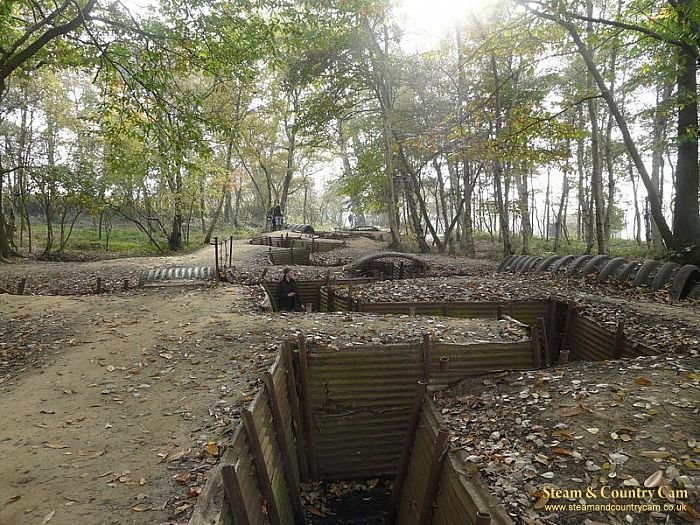
Russia's Exit from the War
The Great War Winds Down
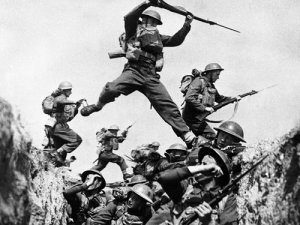
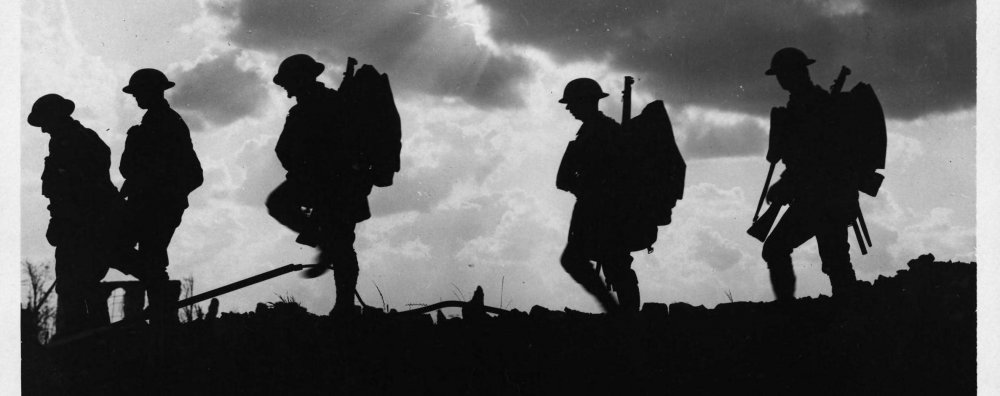
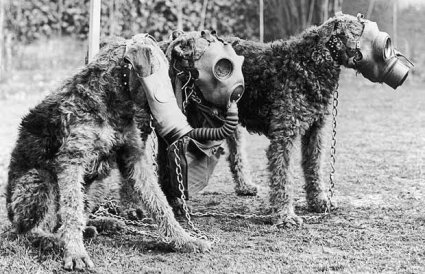

ARTIST HISTORICAL RENDITIONS WORLD WAR I
A LOOK BACK BY LOOKING AT TODAY
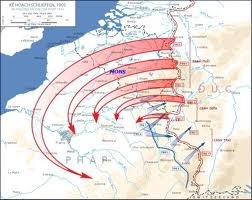
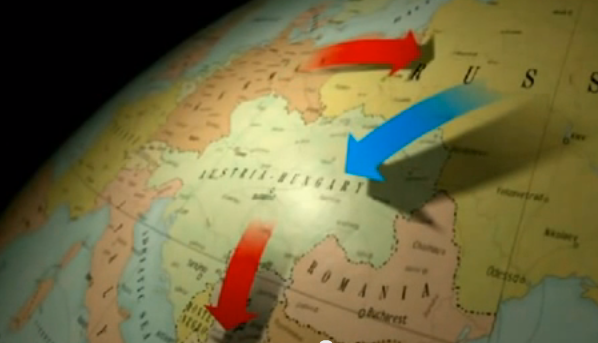
Back Next
 Magazine Posts
Magazine Posts Table of Contents
Table of Contents